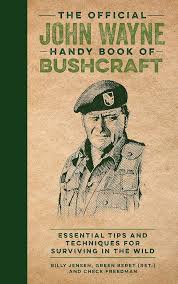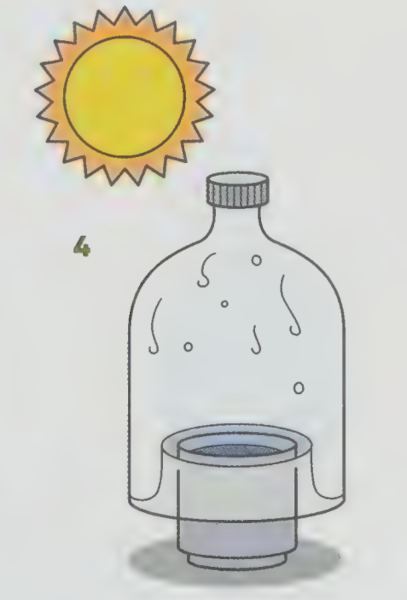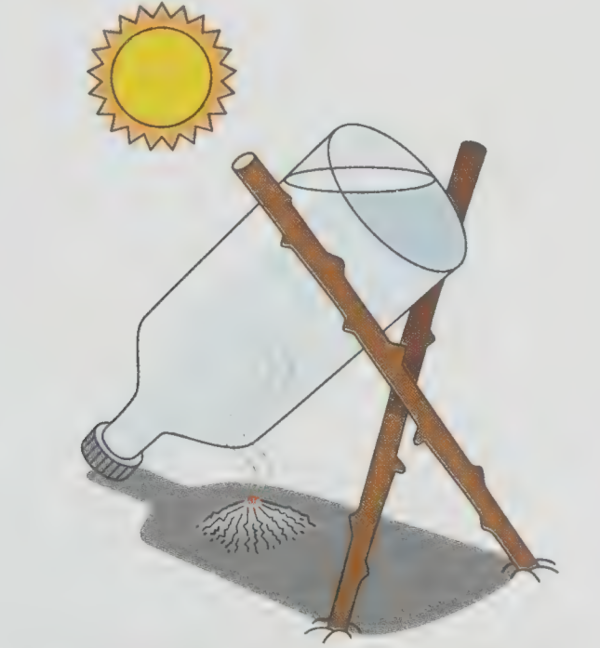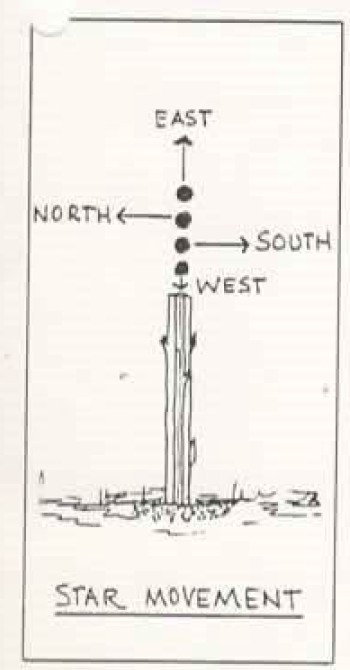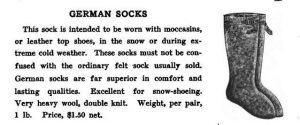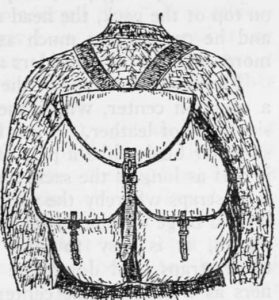Trivia: I share my birthday with John Wayne. Some years, a TV channel will schedule a day of his films. Good, unpretentious entertainment! That is me sorted for the day!
I once watched something where a character declares “I try not to have high expectations. I am, therefore, seldom disappointed. Occasionally, however, I am pleasantly surprised!”
That is not a bad philosophy, and I was reminded of this when I began to read “The Official John Wayne Handy Book of Bushcraft”.
This could be really bad, have hidden pearls, or just be a bit of a giggle.
Firstly, I will answer a question I usually save until the end of these reviews. This book should NOT be used as a primary survival guide. Some fields are omitted, others lack adequate detail.
Some of the content was useful. There is a section on dealing with a riptide, which is not a topic I have seen in many manuals,
Each section is only a few pages long, so I expect much of this content was originally an article in “The Official John Wayne Collector's Edition” magazine.
Many of the sections only deal with a single topic or subject, such as a single type of knot or a particular type of campfire. That works well for certain topics and is a presentation style I may experiment with.
In other places, the treatment of the topic is rather brief, and in a few places additional illustrations would have been useful. The latter is odd, since in general the book is quite well illustrated, both with drawings supporting the text and photos from Wayne’s films.
Tools
The book starts with a section on how to make a variety of tools using primitive means. No mention is made of the risk of silicosis from stone knapping. Improvise a nose and mouth covering when making stone tools. Eye protection, if you have it, is also prudent unless you are a big Rooster Cogburn fan.
Several places in the text you are told to hit the back of an axe or knife blade with a stick or stone. Do not use a stone! The technique is called “batoning” for a good reason.
If you made yourself a stone knife as suggested at the start of the book, hitting it with another stone will waste hours of your careful work!
The section on making a whistle was disappointing. Acorn cups may be quite hard to find in certain seasons and regions.
The section on making a bow shows the first finger hooked over the top of the arrow, which must result in considerable friction.
Correctly, the book advises that hunting with a sling requires a vast quantity of practice. Incorrectly, it says the weapon is also called a “slingshot”. [Wikipedia also gets this wrong!] Sling and slingshot are quite different weapons using quite different principles.
Knots
The chapter on knots deals with one knot per section.
In some of these sections more information on the application of such knots might have been useful.
For example, the Alpine Butterfly knot is covered, but no mention of the quick and handy way this may be tied.
The section on the half hitch actually shows two half hitches in the illustration.
Food and Water
The chapter on food and water mentions water tapping from trees, which some survival manuals neglect.
The edibility test is described in detail, but no mention is made of prioritising the test for foods that are most abundant in the area.
There are sections on line and rod fishing and fish trapping, but no mention of night/trot lines. The latter section could have used some illustrations of various fish traps.
There is a section on “knife hunting” with a caution on how dangerous it will be and the high likelihood of injury.
Use the knife to cut a stick and make a spear. If in terrain where there are no sticks, you are unlikely to get close enough to use a knife, anyway.
Fire
The chapter on fire I thought was quite good. Some fire‑lighting techniques not often covered, with some useful illustrations.
Some discussion of various types of campfire. Uses for charcoal, and emphasis on properly extinguishing your fire.
Wet rocks in a fire may explode into fragments, not “shrapnel”, which is a different thing.
There is a section on using a Mylar space blanket as a reflector for your fire. This is a legitimate application, but perhaps some mention should have been made that a higher priority use for such an item is waterproofing your shelter roof or wrapping yourself.
Shelter
The chapter on shelters was much less satisfactory. It starts with a description on how to cut down a tree because it may be where you want to make a camp! Camp somewhere else, yahoo!
You are told to hang a hammock using a figure eight knot, but no real explanation nor illustration.
Building a raised bed suggests using logs for the short side. Two long logs with shorter sticks between them seems far more practical.
There is a description on how to make a five foot diameter teepee. Not sure what for. I could not lay down in such a space, let alone someone John Wayne’s height!
One of the illustrations incorporates ideas such as using natural windbreaks such as rocks, but seems to show the bed laid perpendicular to the fire.
There is a lot about this chapter I feel could be improved.
One error that really has me scratching my head is that in several sections the authors describe shelters made with “poncho liners” when they clearly mean ponchos.
You would think a retired Green Beret and a SERE course graduate would know the difference.
You would think that the editorial staff of the magazine might have picked this error up.
You would think some of the readers of the magazine might have written in about this obvious error the first time it appeared.
To confuse a liner with a more external layer is itself a really bizarre mistake for native English speakers to make!
“Make a map” could have mentioned that birch bark or similar and charcoal could be used to make a portable map.
Another objectionable section is the recommendation to shoot any snakes on sight!
You should not kill anything unless you have a legitimate reason. This saves ammunition, if nothing else.
As a later section notes, most snakes will not bother you if you leave them alone. If there is a danger of stepping on a snake, carry and use a walking staff.
At the end of the book is an advert for a survival training school where both authors work. The various points raised above do not really form a recommendation.
After finishing this book, I started browsing “The Official John Wayne Handy Book for Men”. This begins with some bushcraft information. I found this description of making a bow and arrows better written. Some of the other articles on the same topics are also superior.
It mucks up the illustration of how to identify the North Star, however.
